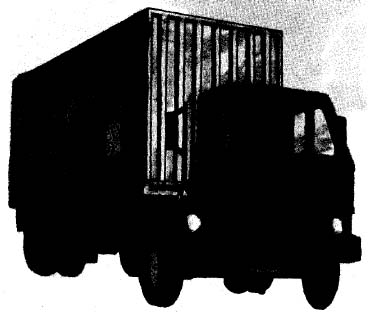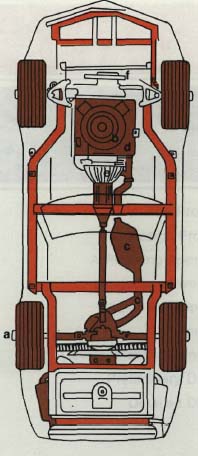Introduction
Highway Noise Abatement
This publication is designed as a guide to aid individuals entrusted with the design of highway noise barriers, particularly in regard to visual quality. This guide introduces the basic principles of visual quality in general terms and illustrates the application of these basic principles to the design of highway noise barriers.
Design is a Process. The design of highway noise barriers is a process which involves a logical sequence of events including inventory, analysis, concept development, preliminary design, structural and detail design, etc. This guide indicates how visual design principles can be incorporated into this process.
Highway noise abatement measures can create visual problems due to the nature of the noise barrier and its acoustical requirements. This guide illustrates the potential visual problems created by noise barriers and identifies design measures which will minimize the visual disruption of the environment due to the construction of noise barriers.
Noiseis defined as any undesirable, unwanted sound. Highway noise is unwanted sound originating from motor vehicles - engine, cooling fan, exhaust system, and tires contribute primarily to the din heard along any heavily traveled highway.
Noise abatementis any positive measure undertaken to reduce the undesirable noise emanating from a source or to reduce the noise level at a receiver - in this case a person likely to be sensitive to excessive noise. In highway noise abatement, the path between source and receiver is blocked by the installation of a noise barrier which reduces the amount of noise reaching the receiver. To be acoustically effective, a noise barrier must interrupt the line-of-sight between source and receiver.
Furthermore, research has shown that a barrier must be placed as close as possible to the source to achieve maximum noise reduction. Barrier effectiveness is increased if the barrier is acoustically opaque; therefore, solid objects without visible openings are required. The acoustical requirements for highway noise barriers create potential visual problems because blocking the line-of-sight means blocking the view. Placing the barrier close to the source (vehicles), means that noise barriers will be highly visible from the roadway. This guide will discuss the visual problems created by noise barriers and will examine the visual quality of various types of barriers currently in use throughout the United States.
Noise barriers currently in use in the United States consist of three distinct types: earth berms, walls, and combinations of berms and walls. Earth berms are mounds or embankments of earth created along a highway to block the line-of-sight between the highway and noise sensitive areas such as residential housing, schools, hospitals, etc. The mass of the berm effectively attenuates the transmission of sound. Similarly, solid walls placed along a highway reduce the noise level on the receiver side of the wall. Walls are perhaps the most common method of highway noise abatement and have been constructed from a variety of materials. Combination berms and walls are berms upon which a wall is placed in order to achieve the desired height.

Often these are constructed where space limitations prevent construction of a berm alone. Research into the theory and practice of highway noise abatement is a continuing effort throughout the world, and additional methods may become available in the future. This publication is concerned with visual design in relation to the current state-of-the-art of highway noise abatement.
This manual is a guide to the basic principles which affect visual perception. These principles should serve as tools for the designer of highway noise barriers. It is not the purpose of this publication to provide design solutions to noise abatement, but rather it is to illustrate and emphasize the need for visual quality as part of the design process. As such, the manual should be used as a supplement to technical information concerning noise abatement in an effort to produce highway noise barriers which are functional, attractive, and visually related to the surrounding environment.
Example of Major Noise Sources in a Car

Elevation View

Plan View